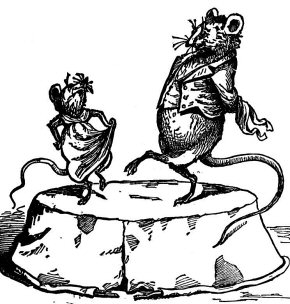5 January 2012
Stem cell injections produce robust anti-aging effects
by Will Parker

University of Pittsburgh School of Medicine scientists say that mice injected with stem cell-like progenitor cells seemed to have "sipped from the fountain of youth." The genetically modified mice used in the experiment were bred to exhibit aging characteristics similar to those observed in sufferers of progeria, a premature aging disorder.
Reporting their work in Nature Communications, the researchers said that instead of becoming infirm and dying early as untreated mice did, animals that got the stem/progenitor cells improved their health and lived two to three times longer than expected.
Past studies have indicated that stem cell dysfunction occurs in a variety of tissues in old age, but it's wasn't clear whether that loss of function contributed to the aging process or was a result of it. University of Pittsburgh researcher Laura Niedernhofer said the new results indicated that stem cell dysfunction was a cause of the changes seen with aging.
Niedernhofer and co-researcher Johnny Huard examined a stem/progenitor cell population derived from the muscle of progeria mice and found that compared to those from normal rodents, the cells were fewer in number, did not replicate as often, didn't differentiate as readily into specialized cells and were impaired in their ability to regenerate. The same defects were discovered in the stem/progenitor cells isolated from very old normal mice.
"We wanted to see if we could rescue these rapidly aging animals, so we injected stem/progenitor cells from young, healthy mice into the abdomens of 17-day-old progeria mice," Huard explained. "Typically the progeria mice die at around 21 to 28 days of age, but the treated animals lived far longer - some even lived beyond 66 days. They also were in better general health."
Impressively, closer examination of the modified injected mice showed new blood vessel growth in the brain and muscle, even though the stem/progenitor cells weren't detected in those tissues. Niedernhofer added that the stem cells didn't migrate to any particular tissue after injection into the abdomen.
"This leads us to think that healthy cells secrete factors to create an environment that help correct the dysfunction present in the native stem cell population and aged tissue," she speculates. "In a culture dish experiment, we put young stem cells close to, but not touching, progeria stem cells, and the unhealthy cells functionally improved."
The researchers say the provocative findings need further investigation. They hint that it might be possible one day to forestall the biological declines associated with aging by delivering a shot of youthful vigor, particularly if specific rejuvenating proteins or molecules produced by the stem cells could be identified and isolated.
Related:
Discuss this article in our forum
Potent anti-aging mechanism identified
Soda drinks found to accelerate signs of aging
Facial aging more than skin deep
Demographers Mull Effects Of Aging Population
Source: University of Pittsburgh Schools of the Health Sciences
